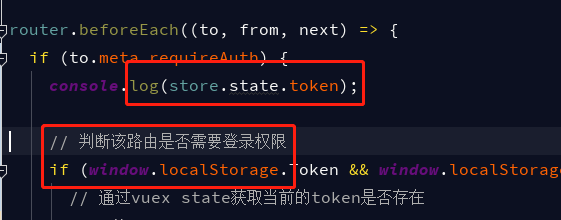可以将文章内容翻译成中文,广告屏蔽插件可能会导致该功能失效(如失效,请关闭广告屏蔽插件后再试):
问题:
I am asking Python to print the minimum number from a column of CSV data, but the top row is the column number, and I don't want Python to take the top row into account. How can I make sure Python ignores the first line?
This is the code so far:
import csv
with open('all16.csv', 'rb') as inf:
incsv = csv.reader(inf)
column = 1
datatype = float
data = (datatype(column) for row in incsv)
least_value = min(data)
print least_value
Could you also explain what you are doing, not just give the code? I am very very new to Python and would like to make sure I understand everything.
回答1:
You could use an instance of the csv module's Sniffer class to deduce the format of a CSV file and detect whether a header row is present along with the built-in next() function to skip over the first row only when necessary:
import csv
with open('all16.csv', 'r', newline='') as file:
has_header = csv.Sniffer().has_header(file.read(1024))
file.seek(0) # Rewind.
reader = csv.reader(file)
if has_header:
next(reader) # Skip header row.
column = 1
datatype = float
data = (datatype(row[column]) for row in reader)
least_value = min(data)
print(least_value)
Since datatype and column are hardcoded in your example, it would be slightly faster to process the row like this:
data = (float(row[1]) for row in reader)
Note: the code above is for Python 3.x. For Python 2.x use the following line to open the file instead of what is shown:
with open('all16.csv', 'rb') as file:
回答2:
To skip the first line just call:
next(inf)
Files in Python are iterators over lines.
回答3:
You would normally use next(incsv) which advances the iterator one row, so you skip the header. The other (say you wanted to skip 30 rows) would be:
from itertools import islice
for row in islice(incsv, 30, None):
# process
回答4:
In a similar use case I had to skip annoying lines before the line with my actual column names. This solution worked nicely. Read the file first, then pass the list to csv.DictReader.
with open('all16.csv') as tmp:
# Skip first line (if any)
next(tmp, None)
# {line_num: row}
data = dict(enumerate(csv.DictReader(tmp)))
回答5:
Borrowed from python cookbook,
A more concise template code might look like this:
import csv
with open('stocks.csv') as f:
f_csv = csv.reader(f)
headers = next(f_csv)
for row in f_csv:
# Process row ...
回答6:
use csv.DictReader instead of csv.Reader.
If the fieldnames parameter is omitted, the values in the first row of the csvfile will be used as field names. you would then be able to access field values using row["1"] etc
回答7:
The new 'pandas' package might be more relevant than 'csv'. The code below will read a CSV file, by default interpreting the first line as the column header and find the minimum across columns.
import pandas as pd
data = pd.read_csv('all16.csv')
data.min()
回答8:
Well, my mini wrapper library would do the job as well.
>>> import pyexcel as pe
>>> data = pe.load('all16.csv', name_columns_by_row=0)
>>> min(data.column[1])
Meanwhile, if you know what header column index one is, for example "Column 1", you can do this instead:
>>> min(data.column["Column 1"])
回答9:
For me the easiest way to go is to use range.
import csv
with open('files/filename.csv') as I:
reader = csv.reader(I)
fulllist = list(reader)
# Starting with data skipping header
for item in range(1, len(fulllist)):
# Print each row using "item" as the index value
print (fulllist[item])
回答10:
The documentation for the Python 3 CSV module provides this example:
with open('example.csv', newline='') as csvfile:
dialect = csv.Sniffer().sniff(csvfile.read(1024))
csvfile.seek(0)
reader = csv.reader(csvfile, dialect)
# ... process CSV file contents here ...
The Sniffer will try to auto-detect many things about the CSV file. You need to explicitly call its has_header() method to determine whether the file has a header line. If it does, then skip the first row when iterating the CSV rows. You can do it like this:
if sniffer.has_header():
for header_row in reader:
break
for data_row in reader:
# do something with the row
回答11:
I would use tail to get rid of the unwanted first line:
tail -n +2 $INFIL | whatever_script.py
回答12:
just add [1:]
example below:
data = pd.read_csv("/Users/xyz/Desktop/xyxData/xyz.csv", sep=',', header=None)**[1:]**
that works for me in iPython
回答13:
Python 3.X
Handles UTF8 BOM + HEADER
It was quite frustrating that the csv module could not easily get the header, there is also a bug with the UTF-8 BOM (first char in file).
This works for me using only the csv module:
import csv
def read_csv(self, csv_path, delimiter):
with open(csv_path, newline='', encoding='utf-8') as f:
# https://bugs.python.org/issue7185
# Remove UTF8 BOM.
txt = f.read()[1:]
# Remove header line.
header = txt.splitlines()[:1]
lines = txt.splitlines()[1:]
# Convert to list.
csv_rows = list(csv.reader(lines, delimiter=delimiter))
for row in csv_rows:
value = row[INDEX_HERE]
回答14:
Because this is related to something I was doing, I'll share here.
What if we're not sure if there's a header and you also don't feel like importing sniffer and other things?
If your task is basic, such as printing or appending to a list or array, you could just use an if statement:
# Let's say there's 4 columns
with open('file.csv') as csvfile:
csvreader = csv.reader(csvfile)
# read first line
first_line = next(csvreader)
# My headers were just text. You can use any suitable conditional here
if len(first_line) == 4:
array.append(first_line)
# Now we'll just iterate over everything else as usual:
for row in csvreader:
array.append(row)


